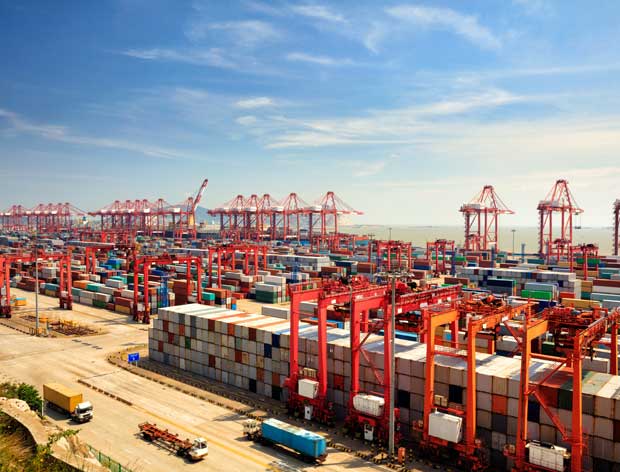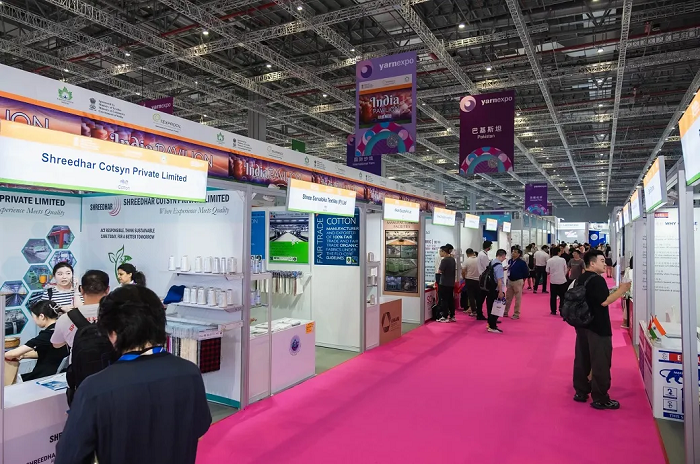
Rajasthan’s garment industry which employs more than 3 lakh people is facing a huge labor shortage in spite of the government’s taking steps for the industry. Accommodation and transportation are the main concerns keeping employees away. "Despite our promise to train and employ them, we are not getting labourers. Workers are not willing to relocate due to the high cost of living. The city at Tapukara in Haryana-Rajasthan border will have full-fledged facilities for labour, with active support of the Rajasthan government.” In the near future, industries from Gurgaon and Haryana are expected to shift to Rajasthan. If this happens, the state will lose a huge share of revenue," said Gautam Nair, MD, Matrix Clothing, Udyog Vihar VI, Gurgaon.
Labour and employees working in the industrial belts at Gurgaon’s Udyog Vihar and Manesar face tremendous problems of transportation and poor living conditions. "As we fight problems of labour, electricity, transportation among others, many garment manufacturing units in the city are now looking at the alternative of moving to Rajasthan, as the state government is offering better facilities in its new industrial policy for the garment industries," explains Pavan Kumar Swami, an industrialist and manufacturers of Macho Jeans.
Greensboro-based apparel company VF Corporation recently announced that it will establish three global innovation centres by 2014. This is an initiative to focus on game changing product innovations in technical apparel, footwear and jeans. These centres will be equipped with high end staff comprising of engineers, scientists, technical designers and key talent who will combine proprietary insights with consumer needs and a deep understanding of technology and new materials.
"These Global Innovation Centres will spark opportunities to fuel VF's growth and shape the future of apparel and footwear," said Eric C. Wiseman, CEO. "From the mass market to the mountain top and from the US to South America, Asia and Europe, we will develop and deliver innovative, 'must-have' products for consumers,” Wiseman added. “We will inspire consumers to buy our products and, as a result, drive revenue growth and even higher profitability."
The centres will focus on developing innovative products. "In 2010, we first laid out our vision for the role that innovation would play in VF's growth," he said. "This move is critical to advancing our journey as it gives us a competitive advantage in the apparel industry. We will fully leverage what we learn by sharing output from the innovation centres across our 30-plus brands," added Wiseman.
The technical apparel innovation centre will be in Alameda, Calif, jeans centre will be in Greensboro, N.C. and the footwear centre will be in Stratham, N.H. All are expected to be operational during the first half of 2014.
Scott Baxter, Group President for Jeanswear, Imagewear and South America, is based in Greensboro and will oversee the new centre. He said the leaders of VF’s denim brands have more meetings in Greensboro than anywhere else, so it was a logical location. He added, “This centre can focus exclusively on innovation and breakthrough innovation. We want to work on bigger platforms and bigger ideas.”
Owing to international pressures, Bangladesh Garment Manufacturers and Exporters Association is preparing a list of garment factories that are non-operational and existing only on paper. Following recent tragedies, the pressure from international buyers has increased. BGMEA vice-president Shahidullah Azim says that they had been assessing the number of non-operational factories as the ministerial committee on social compliance had been repeatedly asking them to submit the list of operational factories. He said the number of BGMEA member factories was 5,400 but a large number of factories had been remaining non-operational for long.
Azim also said that about 1,800 member factories were now out of operation and some of them were existing only on paper with no physical presence. He also said that the government might set a policy for non-operational factories and the BGMEA would not take the responsibility of the fate of the factories that exist only on paper.
A committee headed by its first vice president Nasiruddin Ahmed Chowdhury was formed recently to prepare a list of such factories and after that they will discuss with the concerned ministries to decide the next steps, he said. Explaining the reason for such a move, he said that there are names of factories but in reality when the inspectors visit, they find no sign of any factory which creates problems. Moreover, there are also pressure from the buyers and the government for a real picture of the functional factories, he further said.
Bangladesh’s export of apparel products to India rose by about 37 per cent in fiscal year 2012-13 thanks to duty-free and quota-free access of some textile products into the Indian market. Garment exports to India increased mainly due to the tariff concession. Bangladesh sees a bright export potential in India. India has a strong demand for Bangladeshi products like trousers, shirts, blouses, skirts, kids’ wear, cotton nightwear and jeans.
A break-up of Bangladesh exports to India reveals that textile fibers, paper yarn, and woven fabric constitute about 24 per cent of the exports followed by other manmade textile articles, which constitute about 14 per cent. However, the devaluation of Indian rupee against the dollar may affect exports of readymade garments as Indian consumers would cut consumption.
Meanwhile India has pledged supplies of two million bales of cotton to Bangladesh — its main competitor in garment exports —starting October. Bangladesh textile mills have been assured of a smooth flow of cotton from India even if India has to ban cotton exports to other countries.
Assuring raw material supplies to Bangladesh, which depends on imports to cater to apparel export demand, could further enhance its competitiveness against Indian mills, considering that labor costs in Bangladesh stand at 53 per cent of India's and power costs at 63 per cent.
The Forum on Color and Quality Management of Textile & Garment Brands was held in Shanghai, China, August 20 and 21. More than 70 delegates from more than 30 textile and apparel brands, companies, universities, testing institutes and equipment suppliers attended this forum such as Perry Ellis, PVH, IKEA, Hugo Boss, Datacolor, Fulida, Anoky etc.
Mohamed Noorulla, VP of Perry Ellis International, introduced the color management and supply chain management of Perry Ellis. His presentation dwelt on color approval, color management and speed-to-market, provided a method of instruction of color supply chain management.
A sales manager of Datacolor Trading (Shanghai) expounded the application of digital color management in domestic and international garment brands. The forum was co-sponsored by China Textile Information Center (CTIC) and China Fashion & Color Association (CFCA) and organized by CNCSCOLOR Global technical service center and China National Textile and Apparel Council.
Topics centered on areas as how to improve the color and quality management level of the textile and garment supply chain, how to control and optimize cost, how to speed to market and so on. In addition to the keynote speech, special topics like application of color management and product quality management in the textile and garment supply chain were discussed.
The Punjab Industrial Estates Development and Management Company (PIEDMC) in the Punjab province of Pakistan will develop a garment city in order to revitalise the garment industry. The garment city will be established in about 400 to 500 acres of land close proximity to Lahore. This proposed industrial estate would provide modern infrastructure.
The company is in process of constructing five other industrial estates in the province. The estates would make the garment sector more competitive and help accelerate manufacturing capacity.
PIEDMC was established in 2003 with a public-private partnership to achieve orderly, planned and rapid industrialization. The main objective is to develop a chain of new industrial estates along with upgrading existing ones in a dynamic and innovative manner by providing solutions to the problems of prospective entrepreneurs. Its mission is to provide world class quality infrastructure, environment, confidence and freedom for local and foreign investors to enhance their business activities.
In Punjab, the company’s policy of creating modern industrial infrastructure has generated more than 80,000 new jobs and attracted billions of rupees in fresh investment in Lahore’s Sundar Industrial Estate. PIEDMC has started to take efforts to get the status of special economic zone for all its industrial estates in order to expedite industrialization.
www.pie.com.pk/
A strike by Turkish textile workers has ended following the signing of a collective labor agreement that answered all the demands of the workers’ union. The union and the employers signed a three-year collective agreement. Workers had four main demands, relating to bonuses, overtime pay, a seniority wage rise and a salary rise. According to the agreement, bonuses will return to the previous level of a 120-day salary instead of the current 72.
Workers who work overtime on weekdays, general holidays, national holidays and regional holidays will receive double pay. An additional payment will be made to workers regarding their work duration. As every year adds seven liras, a worker that has been working for 10 years will receive 70 liras additional to his or her wage.
Some 12,000 textile workers went on strike in August, affecting around 30 major textile and clothing producers. About 55 per cent of workers in the sector earn a legal minimum wage. Because of low wages, qualified workers leave the sector and the staff turnover rate reaches 37 per cent.
The textile industry in Turkey covers cotton and synthetic yarns, fibers and fabrics, home textiles, ready-wear and apparel. It is the largest economic sector in Turkey. Turkey is the world’s sixth biggest ready to wear and apparel manufacturer.
The Wearable Technologies Conference will be held in Taipei (Taiwan) during the Taiwan International Cloud Technology & Internet of Things Show, from October 8 to 11, 2013. The Wearable Technologies Conference is the world’s leading innovation and market development platform for wearable technologies and it’s being held in Asia for the first time. It encourages dialogue between decision makers, experts and developers and gathers the whole ecosystem to bring forward new solutions and applications.
Taipei is the logical next step for the wearable technologies conference. Some of the biggest technology manufacturers are in Asia, especially in Taiwan and China. The Taipei conference will present developments, exciting innovations and new insights into wearable technologies, cloud computing and machine-to-machine communications. Selected enabling wearable technologies as well as stars of the wearable technologies market will also be featured.
Wearable Technologies Group is the pioneer and leading innovation and market development platform for technologies worn close to, on, and even in the body. Since 2006 the platform has successfully established a network of more than 3,000 companies, consisting of market leaders and highly innovative companies
www.wearable-technologies.com/
After showing a rise for two consecutive months, production in the Spanish textile industry fell by 5.4 per cent year-on-year in June 2013. In April and May this year, the Spanish textile industry showed a 17.9 per cent year-on-year and 2.4 per cent year-on-year rise in production respectively.
Among the textile subsectors, the biggest increase in production was recorded in the manufacturing of fur articles which increased by 22.7 per cent year-on-year, followed by yarn production, which grew by 3.4 per cent, while readymade garment (except fur) increased by 0.6 per cent.
The decline in Spanish textile industry production is in line with the general decline of 4.6 per cent observed in overall Spanish industrial production in June 2013. Spain is an important manufacturer of textile machinery. The Spanish textile machinery industry has flourished with a structure of small and medium sized companies. Though Spain is a supplier of reliable and good quality textile machinery, it is facing tough competition from other European countries as well as from Asia.
The Spanish textile industry recorded a fall of 0.1 per cent in the month of June compared to 0.6 per cent increase in the month of May 2013. In fact, in June 2013, Spain’s textile export prices dipped for the first time since January 2010. Production of knitted or crocheted garments decreased by 5.6 per cent year-on-year, while textile finishing activity declined by 4.1 per cent.
 For several seasons Esprit has been busy rebuilding its brand, but it's investors remain unimpressed. Marketing is second nature to most high street brands, but a brand's essence should be about its product. Perhaps that is were Hong Kong-based Esprit is getting it wrong. Keeping consumer interest embodies so much more than just advertising. At the end of the day a high street brand like Esprit must have product that is relevant and unique...Read More
For several seasons Esprit has been busy rebuilding its brand, but it's investors remain unimpressed. Marketing is second nature to most high street brands, but a brand's essence should be about its product. Perhaps that is were Hong Kong-based Esprit is getting it wrong. Keeping consumer interest embodies so much more than just advertising. At the end of the day a high street brand like Esprit must have product that is relevant and unique...Read More













